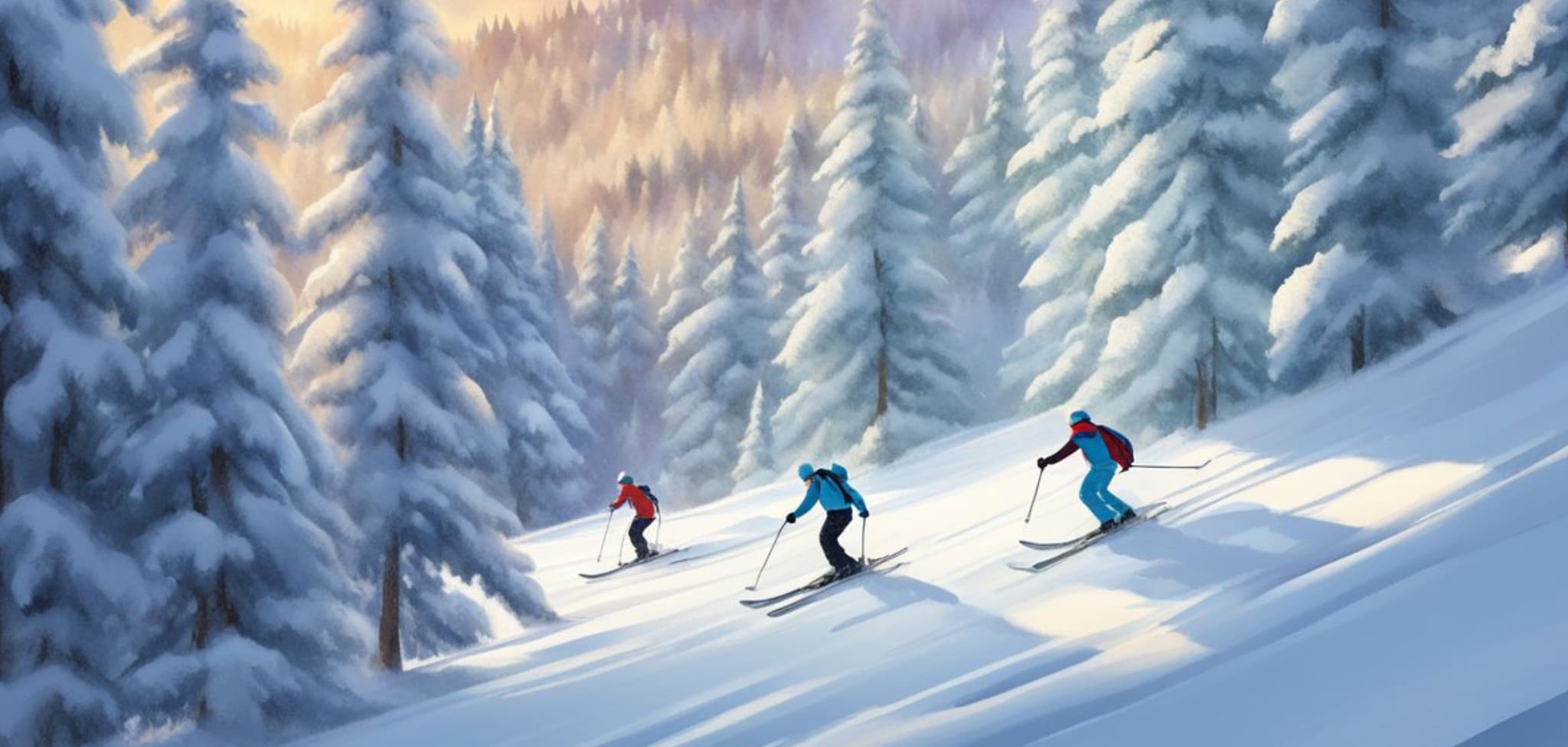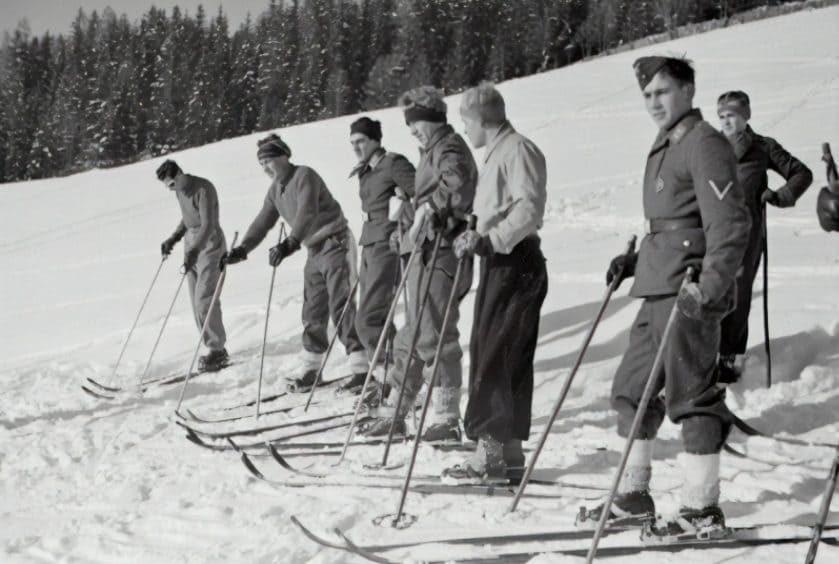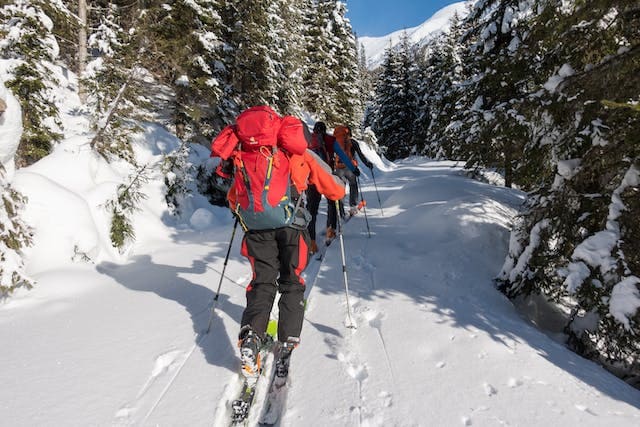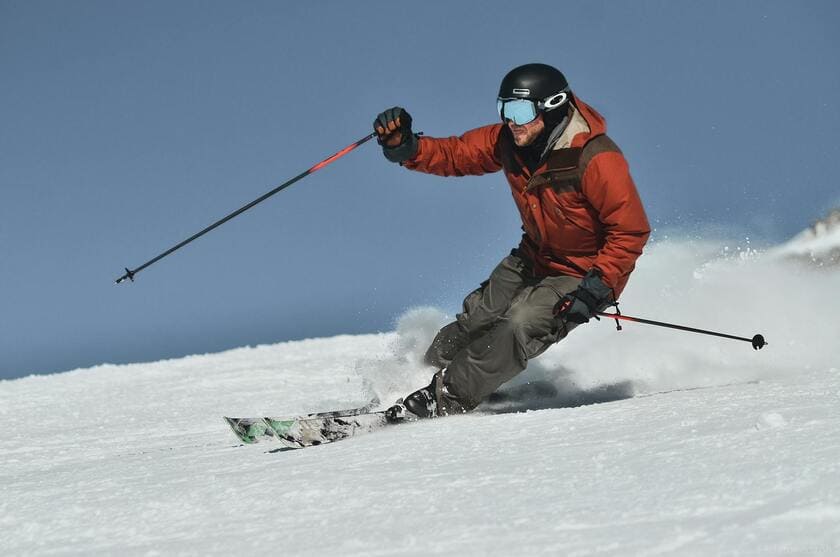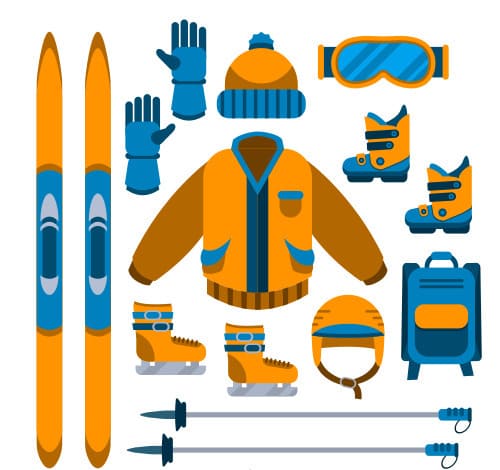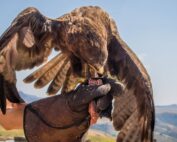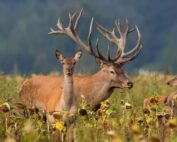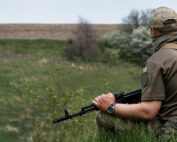The Ultimate Guide to Skiing: From Beginner to Expert
Skiing is a widely popular winter sport enjoyed by millions worldwide, combining adventure, athleticism, and the stunning beauty of snow-covered slopes. Whether you’re a novice or an expert skier, there’s always something new to discover on the mountains. In this comprehensive guide, we’ll take you on a journey from the basics of skiing to advanced techniques, gear recommendations, and the various disciplines within the sport. Let’s dive in and explore the exhilarating world of skiing!
History of Skiing
Skiing has a rich history that dates back thousands of years. It is believed to have originated in Scandinavia and may have been practiced in China even before that. The word “ski” comes from the Old Norse word “skíð,” which means a split piece of wood or firewood.
The first written record of skiing as a sport comes from the 16th century in Norway. The book “The King’s Mirror” describes how soldiers used skis for training and how they would hold competitions to see who was the best skier. Skiing soon became a popular pastime among the Norwegian aristocracy, and the first ski club was founded in 1861.
Early skis were asymmetrical, with one long straight ski for sliding and a shorter ski for kicking. These skis were used in northern Finland and Sweden until the late 19th century. Skiers in those times used one long pole or spear for balance and propulsion.
Skiing continued to grow in popularity throughout the 19th and 20th centuries, with the first ski resorts opening in the Alps in the late 1800s. The sport also became an important part of military training, with soldiers using skis in both World War I and World War II.
Today, skiing is a popular recreational activity and a competitive sport. There are many different types of skiing, including alpine skiing, cross-country skiing, and freestyle skiing. Skiing has come a long way since its early beginnings, but it remains an important part of many cultures around the world.
Types of Skiing
Skiing has evolved into various disciplines, each with its own unique characteristics and techniques. Let’s explore the different types of skiing:
Alpine Skiing
Alpine skiing, also known as downhill skiing, is the most popular form of skiing. It takes place on groomed slopes at ski resorts, where skiers use fixed-heel bindings to glide down the mountains. Alpine skiing can be further divided into different disciplines, including slalom, giant slalom, super giant slalom (super-G), and downhill.
In slalom races, skiers navigate through a course with short, tight turns. Giant slalom races have courses with more widely spaced turns. Super-G and downhill races feature fewer turns and higher speeds, with gates spaced widely apart.
Nordic Skiing
Nordic skiing encompasses cross-country skiing and ski jumping. Cross-country skiing involves gliding across flat or undulating terrain using skis with bindings that attach only at the toes. It can be practiced on groomed trails or in the backcountry. Ski jumping, on the other hand, is a discipline that involves launching oneself off a specially designed ramp and soaring through the air.
Freestyle Skiing
Freestyle skiing combines athleticism and creativity. It includes disciplines such as aerials, moguls, ski cross, half-pipe, and slopestyle. Aerials involve performing acrobatic jumps and tricks, while moguls require skiing over a series of bumps on the slope. Ski cross is a thrilling race where multiple skiers compete simultaneously on a course with jumps and banked turns. Half-pipe and slopestyle involve performing tricks and maneuvers on specially designed features.
Telemark Skiing
Telemark skiing is a technique and discipline named after the Telemark region of Norway. It combines elements of Alpine and Nordic skiing. Telemark skiers use bindings that attach only at the toes, allowing their heels to be raised during turns. The skis themselves are often the same width as Alpine skis.
Backcountry Skiing
Backcountry skiing involves skiing in unmarked and unpatrolled areas, away from the groomed slopes of ski resorts. It offers the opportunity to explore untouched terrain and enjoy the solitude of the mountains. Backcountry skiers often use specialized equipment and techniques for uphill travel, such as skins attached to the bottom of their skis for traction. Safety precautions, including avalanche awareness and rescue equipment, are crucial in backcountry skiing.
Other Types of Skiing
Other types of skiing include speed skiing, freeriding, grass skiing, skiboarding, and ski touring. Speed skiing is all about reaching maximum speeds on steep slopes. Freeriding skiing is off-piste skiing on ungroomed and unmarked slopes. Grass skiing involves skiing on grassy slopes using specialized equipment. Skiboarding combines elements of skiing and snowboarding. Ski touring, also known as backcountry skiing, involves traveling through the mountains on skis, often using skins for climbing uphill.
Getting Started with Skiing
Now that we have explored the different types of skiing, let’s dive into the essentials of getting started with this exciting sport. Whether you’re a complete beginner or looking to brush up on your skills, these tips will set you on the right path.
Choosing a Ski Resort
When planning your skiing adventure, it’s important to choose a ski resort that suits your skill level and preferences. Consider the location, terrain, facilities, and the overall atmosphere of the resort. If you’re a beginner, look for resorts that offer beginner-friendly slopes, ski lessons, and rental equipment. Research the resort’s website and trail maps to familiarize yourself with the layout and facilities.
Taking Ski Lessons
Even if you have friends or family who are experienced skiers, it’s highly recommended to take ski lessons with a certified instructor. Ski lessons provide a solid foundation of skills and techniques, ensuring your safety and enjoyment on the slopes. Group lessons are often more affordable, but if you prefer personalized attention, consider private or semi-private lessons. The guidance of an instructor will help you progress faster and build confidence in your skiing abilities.
Buying or Renting Ski Gear
When starting out, it’s common to rent ski gear rather than investing in your own equipment. Rental shops at ski resorts offer a range of skis, boots, poles, and helmets to suit different skill levels and preferences. Renting allows you to try out different gear and find what works best for you. However, if you’re ready to purchase your own gear, consult with experts at ski shops to find the right skis, boots, poles, and other accessories based on your skiing style and ability.
What to Wear Skiing
Dressing appropriately for skiing is essential to ensure your comfort and safety on the slopes. Layering is key to regulate your body temperature. Start with a moisture-wicking base layer, such as merino wool, to keep you dry and warm. Add a mid-layer for insulation and a waterproof and windproof outer layer to protect you from the elements. Don’t forget to wear ski socks made of merino wool to keep your feet warm and dry. A helmet is a crucial piece of safety equipment that should always be worn when skiing.
Essential Ski Accessories
In addition to your ski gear, there are a few essential accessories that you should have with you on the mountain. These include a wallet with identification, your phone for communication and emergencies, your lift ticket or lesson confirmation, snacks to keep you energized, water to stay hydrated, a warm hat for après-ski, and a dry change of clothes for the drive home. These small but important items will ensure you have a comfortable and enjoyable skiing experience.
Advanced Skiing Techniques
Once you have mastered the basics of skiing, it’s time to explore advanced techniques that will take your skills to the next level. These techniques will help you tackle steeper slopes, navigate through moguls, carve precise turns, and handle challenging terrain with confidence. Let’s delve into some advanced skiing techniques:
Carving Turns
Carving turns is a technique that allows you to make precise and controlled turns on the slopes. It involves rolling your skis onto their edges and using the sidecut of the skis to guide your turns. By shifting your weight and applying pressure to the edges, you can create clean arcs in the snow and maintain speed and control.
Mogul Skiing
Moguls are a series of bumps that form on the slopes due to repeated turns and skier traffic. Skiing through moguls requires agility, balance, and proper technique. To navigate moguls effectively, maintain a rhythm and absorb the bumps with flexion and extension movements. Keep your upper body stable and focus on turning your skis around the bumps.
Ski Jumping
Ski Jumping is a discipline that requires courage and skill. It involves launching oneself off a specially designed ramp and soaring through the air before landing gracefully. Ski jumpers use a combination of technique, balance, and body control to achieve maximum distance and style. Ski jumping competitions are held at various levels, from local events to the Winter Olympics.
Off-Piste Skiing
Off-piste skiing, also known as freeriding or backcountry skiing, involves skiing in ungroomed and unmarked areas. It offers the thrill of exploring untouched terrain and finding fresh powder. When venturing off-piste, it’s crucial to have the necessary avalanche safety equipment and knowledge. Always check the avalanche forecast, ski with a partner, and follow safe travel techniques.
Ski Racing
For those seeking a competitive edge, ski racing provides the ultimate challenge. Ski racing includes disciplines such as slalom, giant slalom, super-G, and downhill. Racers navigate through gates and compete for the fastest time. Ski racing requires precision, speed, and technical mastery. It’s a thrilling sport that pushes skiers to their limits.
Skiing Safety and Mountain Etiquette
Safety should always be a priority when skiing. Follow these safety guidelines to ensure a safe and enjoyable experience on the slopes:
- Know your limits: Ski within your skill level and avoid slopes that are too challenging for your abilities.
- Wear appropriate safety gear: Always wear a helmet and other protective gear such as goggles and wrist guards.
- Observe mountain rules: Familiarize yourself with the rules and regulations of the ski resort, including speed limits, yield signs, and designated ski areas.
- Be aware of your surroundings: Look out for other skiers and snowboarders, and give them plenty of space.
- Take breaks and stay hydrated: Skiing can be physically demanding, so take regular breaks and drink plenty of water to stay hydrated.
- Check weather and avalanche conditions: Before heading out, check the weather forecast and avalanche conditions to ensure safe skiing conditions.
- Respect the mountain environment: Do not litter, respect wildlife, and follow any environmental guidelines set by the ski resort.
Mountain etiquette is also important to ensure a positive skiing experience for everyone:
- Yield to others: Yield to skiers and snowboarders downhill or in front of you, and be aware of those around you.
- Follow the ski area’s code of conduct: Respect the ski area’s rules and guidelines, including avoiding reckless behavior and being courteous to others.
- Be polite and considerate: Treat others with respect and kindness, whether it’s fellow skiers, ski resort staff, or instructors.
- Control your speed: Ski at a speed that is safe and under control, especially in crowded areas.
- Stay on designated trails: Ski only on marked trails and respect any closures or restricted areas.
By following these safety guidelines and practicing good mountain etiquette, you can have a safe and enjoyable skiing experience while respecting others and the mountain environment.
Ski Gear Recommendations
Having the right ski gear is essential for comfort, performance, and safety on the slopes. Here are some gear recommendations to enhance your skiing experience:
Skis
Choosing the right skis is crucial for your skiing style and ability. There are various types of skis available, including all-mountain skis, powder skis, carving skis, and freestyle skis. Consider factors such as ski length, width, and stiffness when selecting skis. Consult with experts at ski shops to find the perfect pair of skis for your needs.
Boots
Ski boots play a significant role in providing comfort and control while skiing. Proper boot fit is essential to avoid discomfort and ensure optimal performance. Consider factors such as flex rating, last width, and customization options when choosing ski boots. It’s recommended to visit a ski shop and get fitted for boots by professionals.
Bindings
Bindings are the interface between your boots and skis, and they play a crucial role in safety and performance. Consider factors such as DIN settings, release mechanisms, and compatibility with your boots and skis when selecting bindings. It’s important to have your bindings properly adjusted and tested by a certified technician.
Poles
Ski poles provide balance, stability, and assistance in maneuvering on the slopes. Choose poles that are the right length for your height and skiing style. Adjustable poles are a good option if you’re unsure about the ideal length. Look for lightweight and durable materials such as aluminum or carbon fiber.
Helmets
Wearing a helmet is essential for protecting your head in case of a fall or collision. Look for helmets that meet safety standards and provide a comfortable fit. Consider features such as ventilation, adjustable fit systems, and compatibility with goggles. It’s recommended to replace your helmet after a significant impact or every few years for optimal safety.
Goggles
Ski goggles protect your eyes from wind, snow, and UV rays, improving visibility on the slopes. Look for goggles with anti-fog coatings, interchangeable lenses for different light conditions, and a comfortable fit. Consider lens tints that enhance contrast and reduce glare. It’s important to choose goggles that fit well with your helmet to ensure a seamless fit.
Clothing and Accessories
Wear clothing appropriate for skiing to stay warm, dry, and comfortable on the slopes. Layering is key, with moisture-wicking base layers, insulating mid-layers, and waterproof and windproof outer layers. Don’t forget to wear ski socks made of moisture-wicking materials to keep your feet warm and dry. Accessorize with gloves or mittens, a neck gaiter or balaclava, and hand and toe warmers for added comfort.
Safety Equipment
For off-piste skiing or backcountry adventures, it’s important to have the necessary safety equipment. This includes an avalanche transceiver, a shovel, a probe, and knowledge of avalanche safety and rescue techniques. Taking an avalanche safety course is highly recommended before venturing into the backcountry.
Conclusion
Skiing is a thrilling and rewarding sport that offers endless opportunities for adventure and enjoyment. Whether you’re a beginner or an expert skier, there’s always room to learn and improve. By following the tips and techniques outlined in this comprehensive guide, you’ll be well-equipped to embark on your skiing journey. Remember to prioritize safety, choose the right gear, and respect the mountain and fellow skiers. So, grab your skis, hit the slopes, and experience the exhilaration of skiing firsthand!
Frequently Asked Questions
What are the different types of skiing?
There are several types of skiing, each with its own unique characteristics and techniques. Some of the main types include:
- Alpine Skiing (Downhill Skiing): Takes place on groomed slopes with fixed-heel bindings. Includes disciplines like slalom, giant slalom, super-G, and downhill.
- Nordic Skiing: Encompasses cross-country skiing and ski jumping. Cross-country skiing involves gliding on flat or undulating terrain, while ski jumping involves launching off ramps.
- Freestyle Skiing: Combines athleticism and creativity, with disciplines like aerials, moguls, ski cross, half-pipe, and slopestyle.
- Telemark Skiing: Combines elements of Alpine and Nordic skiing, with bindings that attach only at the toes.
- Backcountry Skiing: Involves skiing in unmarked and unpatrolled areas, away from groomed slopes, often using specialized equipment.
- Other Types: Include speed skiing, freeriding, grass skiing, skiboarding, and ski touring.
What is the difference between skiing and snowboarding?
Skiing and snowboarding are two distinct winter sports that offer unique experiences on the slopes. Skiing involves using two skis, one for each foot, to glide down a slope. Snowboarding, on the other hand, involves using a single snowboard and facing sideways down the slope. The techniques, equipment, and movements are distinct between the two sports. To learn more about the key differences between skiing and snowboarding, you might want to check out our guide on Snowboarding as a Hobby: Tips and Tricks for Beginners for valuable insights into getting started with snowboarding.
Where is the best place to go skiing?
The best place to go skiing depends on personal preferences and skill levels. Popular skiing destinations include Aspen, Vail, Whistler, and Jackson Hole. It’s essential to research different ski resorts, considering factors like terrain, amenities, and overall atmosphere.
What is cross country skiing?
Cross-country skiing, also known as Nordic skiing, involves gliding across flat or rolling terrain using skis and poles. Unlike alpine skiing, cross-country skiing does not typically involve steep descents. It’s an excellent form of exercise and can be done on groomed trails or in the backcountry.
Is skiing or sking the correct spelling?
The correct spelling is “skiing” with two “i’s.”.
How do I find skiing locations near me?
There are several online resources available to help you find skiing locations near you. Ski.com, SkiCentral, and OnTheSnow are all great websites to start your search. You can also check with local ski shops or tourism offices for recommendations. They can provide information on nearby ski resorts and their amenities.
RECENT POSTS
History of Baseball
History of Baseball: From Its Origins to Modern TimesBaseball is one of the most popular sports in the United States, with millions of fans tuning in to watch games each year. The sport has a [...]
Hunting Falconry
History of Hunting Falconry: An Overview of Falconry's Evolution and Significance Are you interested in learning about the ancient practice of hunting with trained birds of prey? Falconry has been practiced for thousands of [...]
Hunting Destinations in 2024
Hunting Destinations in 2024: Top Picks for Avid Hunters Are you looking for exciting hunting destinations to explore in 2024? Whether you're a seasoned hunter or just starting, there are plenty of options available [...]
History of hunting dogs
Explore the History and Significance of Hunting Dogs: A Comprehensive Guide If you're a hunting enthusiast, then you know the importance of having a reliable hunting dog by your side. Hunting dogs have been [...]
Hunting as a Hobby
Hunting as a Hobby: An Overview Hunting is a popular outdoor activity enjoyed by millions of people worldwide. While some hunt for food, others do it as a hobby. Hunting as a hobby can [...]

